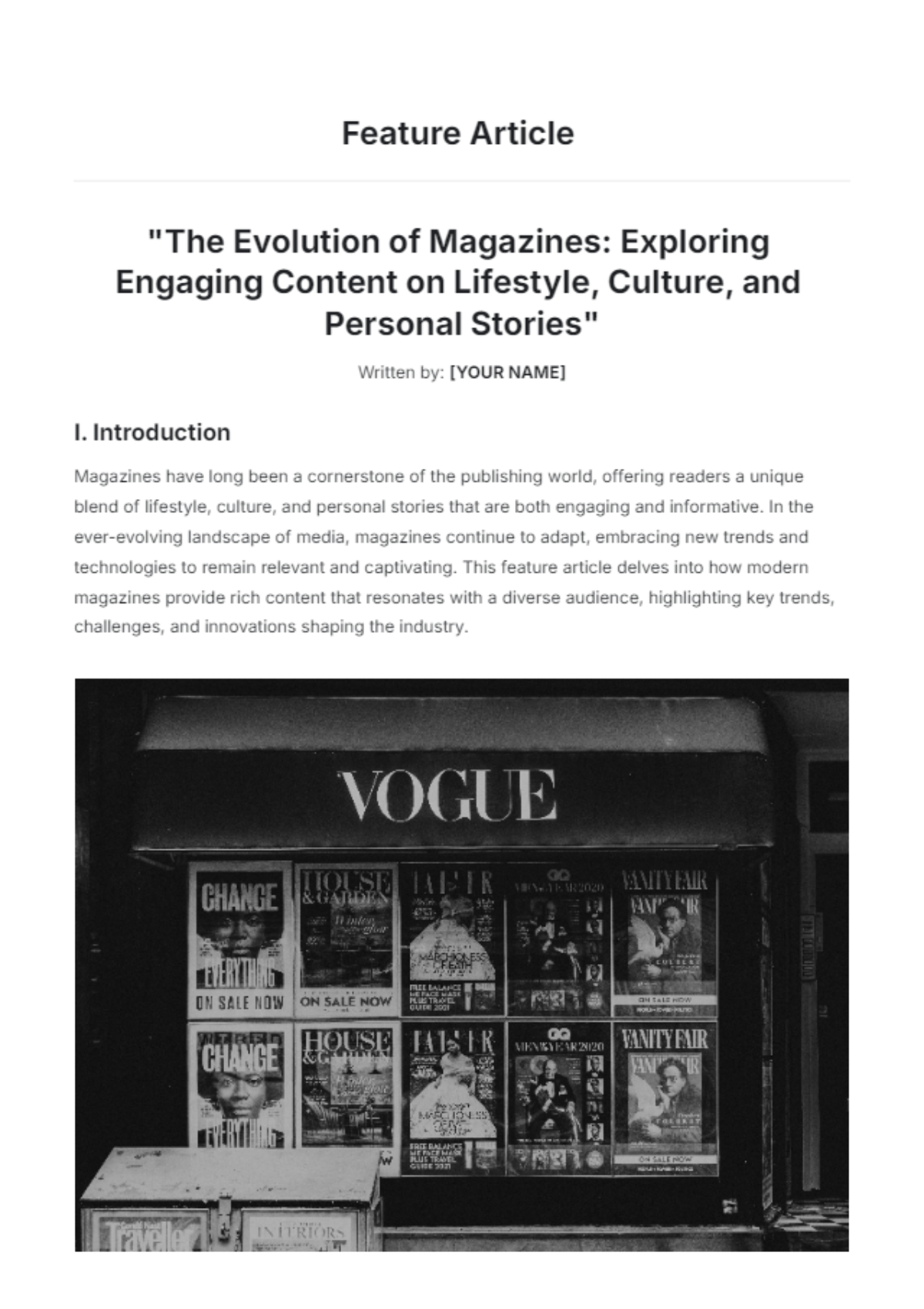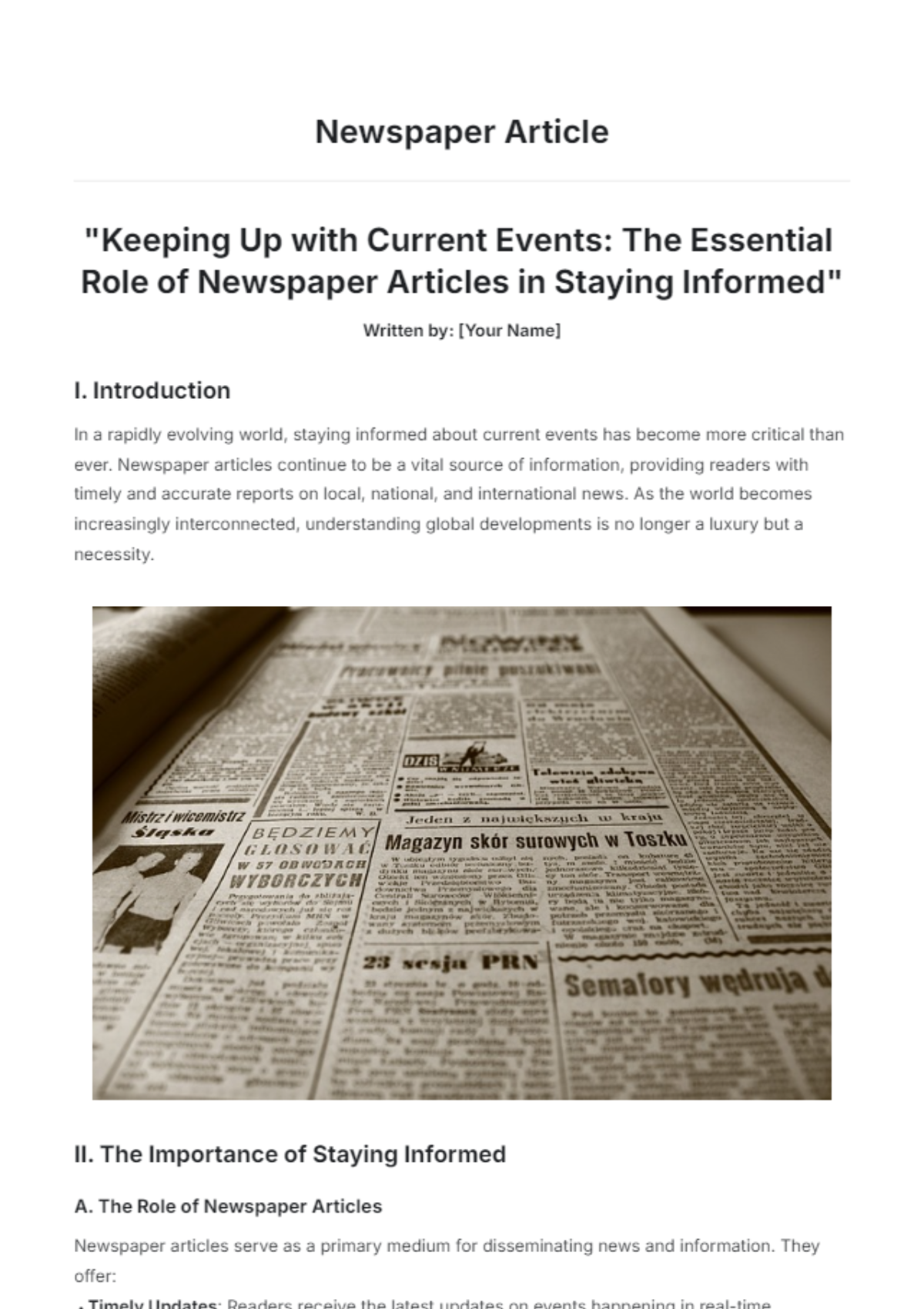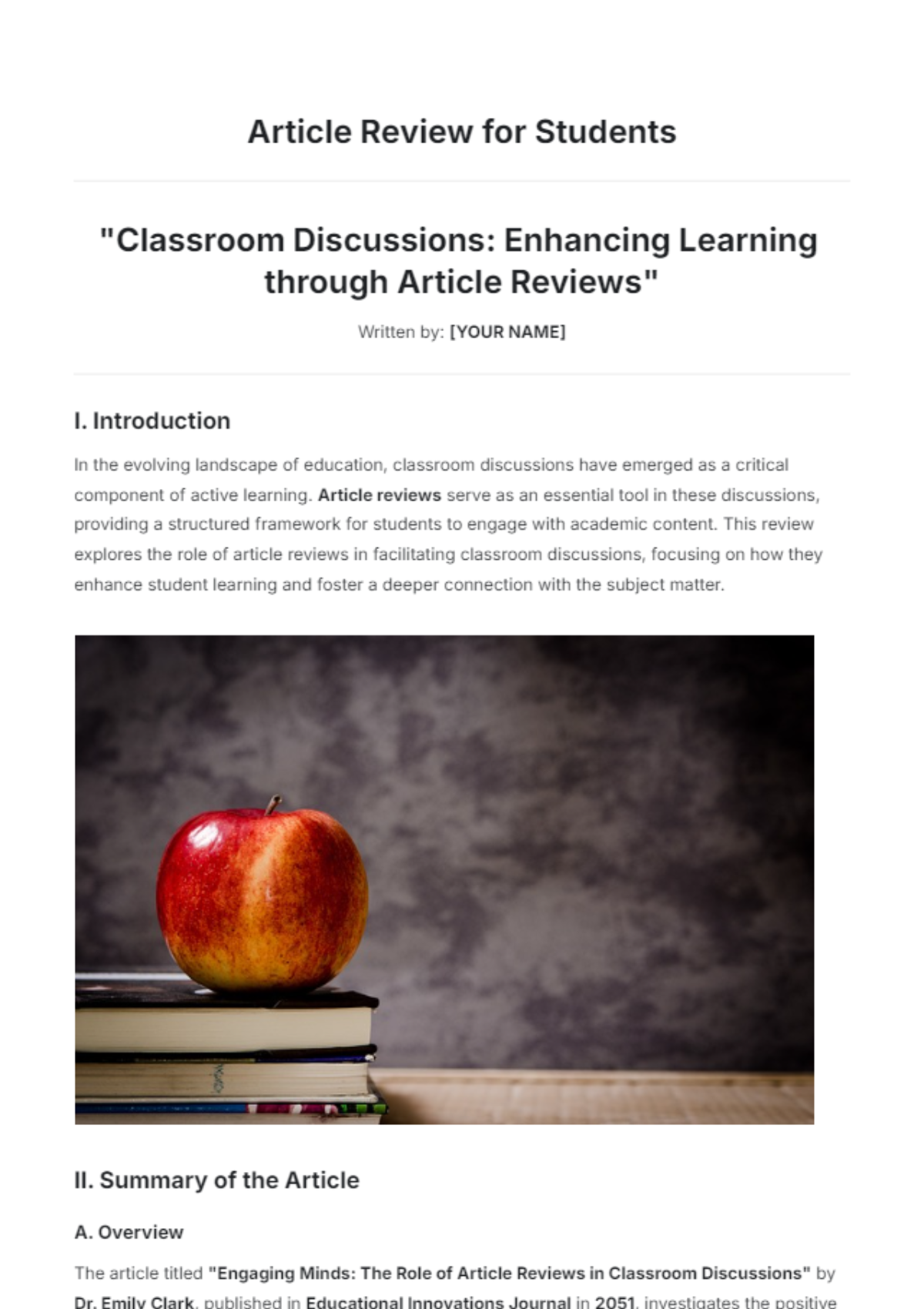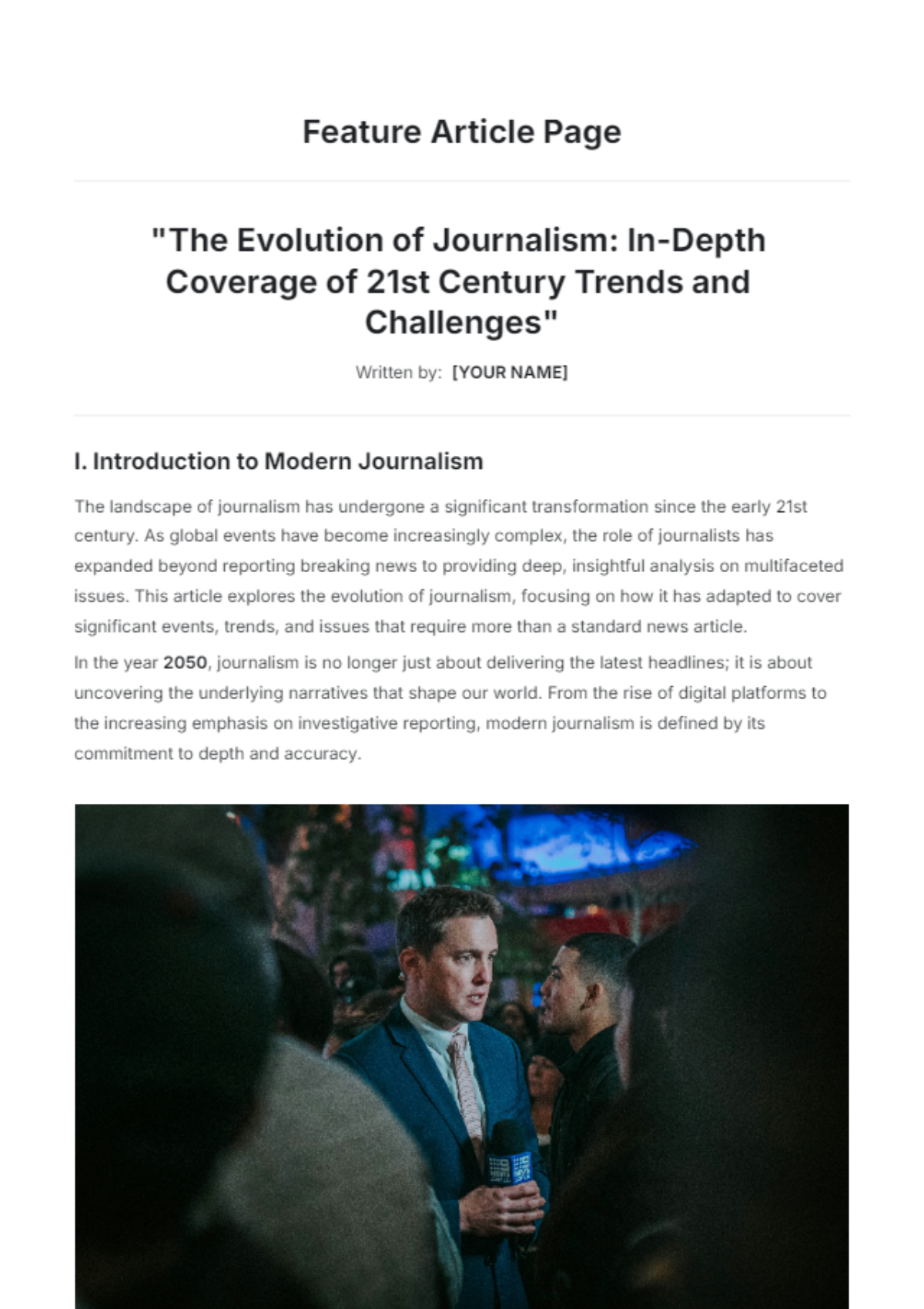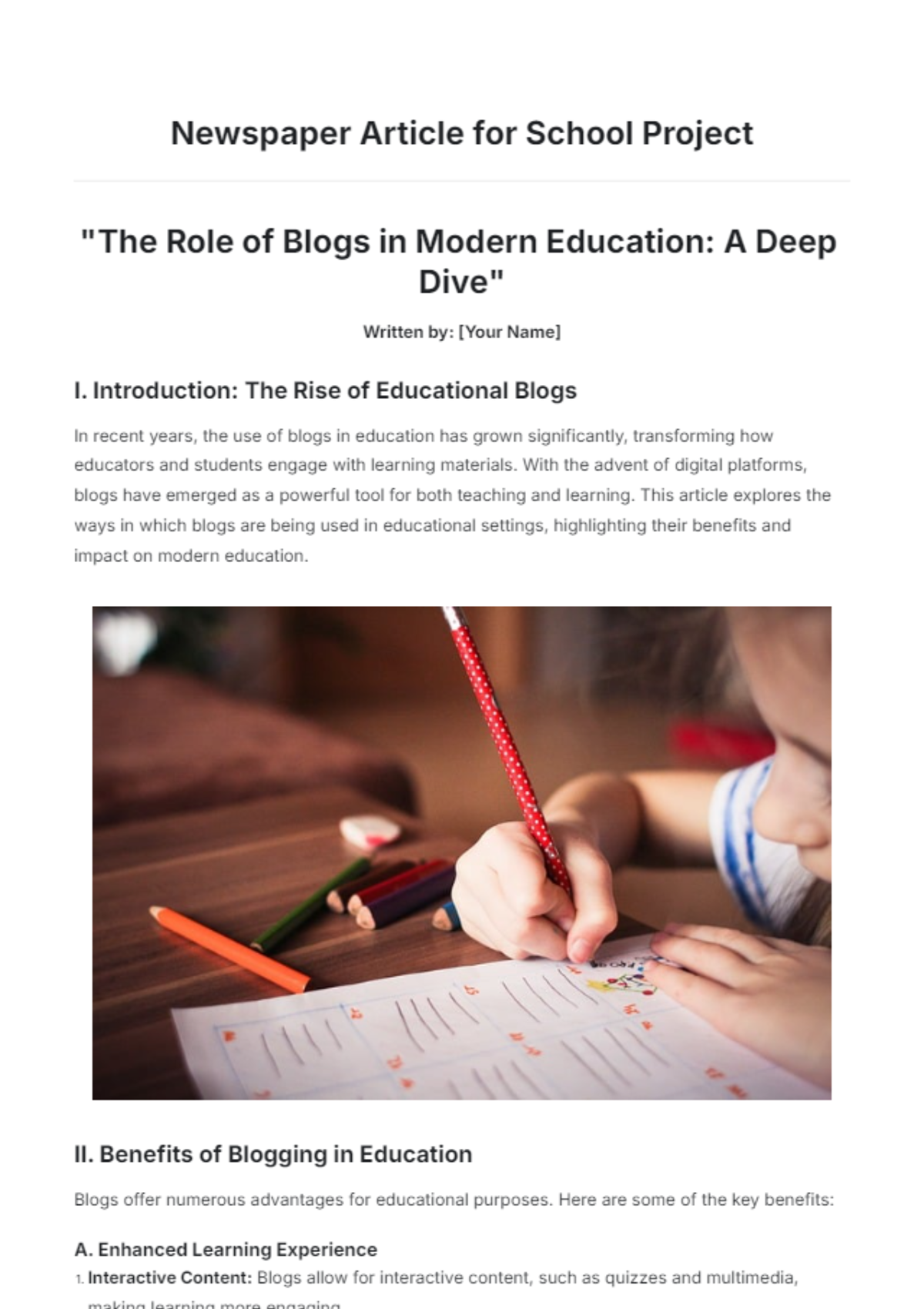Feature Article Page
"The Evolution of Journalism: In-Depth Coverage of 21st Century Trends and Challenges"
Written by: [YOUR NAME]
I. Introduction to Modern Journalism
The landscape of journalism has undergone a significant transformation since the early 21st century. As global events have become increasingly complex, the role of journalists has expanded beyond reporting breaking news to providing deep, insightful analysis on multifaceted issues. This article explores the evolution of journalism, focusing on how it has adapted to cover significant events, trends, and issues that require more than a standard news article.
In the year 2050, journalism is no longer just about delivering the latest headlines; it is about uncovering the underlying narratives that shape our world. From the rise of digital platforms to the increasing emphasis on investigative reporting, modern journalism is defined by its commitment to depth and accuracy.

II. The Rise of In-Depth Reporting
A. The Shift from Headlines to Analysis
Over the past few decades, journalism has shifted from focusing solely on headline-driven news to offering comprehensive analysis. This change has been driven by a growing demand for detailed information and the rise of digital media platforms that facilitate long-form content.
Increased Demand for Context:
Readers are no longer content with just surface-level reporting. They seek to understand the why and how behind the news.
This demand has led to a surge in investigative journalism and feature articles that delve deep into the issues at hand.
Digital Media’s Role:
Online platforms have made it easier for journalists to publish and distribute long-form content.
Multimedia elements, such as videos, infographics, and interactive charts, now accompany many articles, providing a richer experience for readers.
B. Key Trends in Modern Journalism
The emphasis on in-depth reporting has led to several key trends that now define modern journalism:
Investigative Reporting: Journalists increasingly focus on uncovering the truth behind major events, often dedicating months or even years to a single story.
Data Journalism: The use of data to tell compelling stories has become more prevalent, allowing journalists to provide nuanced analysis that might otherwise be missed.
Narrative Storytelling: Many feature articles now employ narrative techniques, turning complex issues into engaging stories that resonate with readers.
III. Case Studies: Journalism in Action
A. Coverage of the 2052 Global Climate Summit
One of the most significant examples of in-depth journalism in recent years was the coverage of the 2052 Global Climate Summit. This event, which gathered world leaders to address the ongoing climate crisis, was extensively covered by journalists who went beyond mere reporting, providing deep analysis on the implications of the decisions made.
Pre-Summit Analysis:
Detailed articles explored the history of climate negotiations, the positions of key countries, and the potential outcomes of the summit.
On-the-Ground Reporting:
Journalists provided live updates, conducted interviews with delegates, and offered real-time analysis on the summit's progress.
Post-Summit Follow-Up:
Feature articles examined the long-term impact of the summit’s decisions on global policies and the future of climate action.
B. The Impact of AI on the Workforce in 2050

Another topic that has received extensive journalistic coverage is the impact of artificial intelligence (AI) on the workforce. As AI technologies have advanced, journalists have explored how these developments are affecting various industries and what the future of work might look like.
In-Depth Interviews:
Journalists conducted interviews with industry experts, workers, and policymakers to provide a comprehensive view of the issue.
Data-Driven Analysis:
Data journalism played a key role in illustrating trends in job displacement, the emergence of new career opportunities, and the broader economic shifts driven by AI.
IV. The Future of Journalism: Challenges and Opportunities
A. Challenges Facing Journalists
While the shift toward in-depth reporting has brought many benefits, it has also introduced new challenges:
Resource Constraints: Investigative journalism requires significant time and resources, which can be difficult to secure in an increasingly competitive media landscape.
Maintaining Objectivity: As journalists delve deeper into complex issues, maintaining objectivity and avoiding bias becomes more challenging.
Navigating Digital Platforms: With the rise of social media and digital news outlets, journalists must adapt to new methods of reaching their audience while preserving the accuracy and integrity of their work.
B. Opportunities for Growth
Despite these challenges, there are numerous opportunities for growth in the field of journalism:
Collaboration with Technology: Journalists can leverage AI and data analytics to uncover new stories and provide deeper insights into existing ones.
Expanding Audience Engagement: Interactive content, such as live blogs and social media integration, allows journalists to engage with their audience in real time.
Global Reach: The internet has dissolved geographical barriers, enabling journalists to reach a global audience and cover issues from multiple perspectives.
V. Conclusion: The Lasting Impact of In-Depth Journalism
As we look to the future, it is clear that in-depth journalism will continue to play a crucial role in shaping public discourse. By providing comprehensive coverage of significant events, trends, and issues, journalists not only inform the public but also contribute to a deeper understanding of the world around us.
In the years ahead, the ability of journalists to adapt to new challenges and embrace emerging opportunities will determine the continued relevance and impact of their work. Whether through investigative reporting, data journalism, or narrative storytelling, the commitment to in-depth coverage will remain a cornerstone of the profession.





